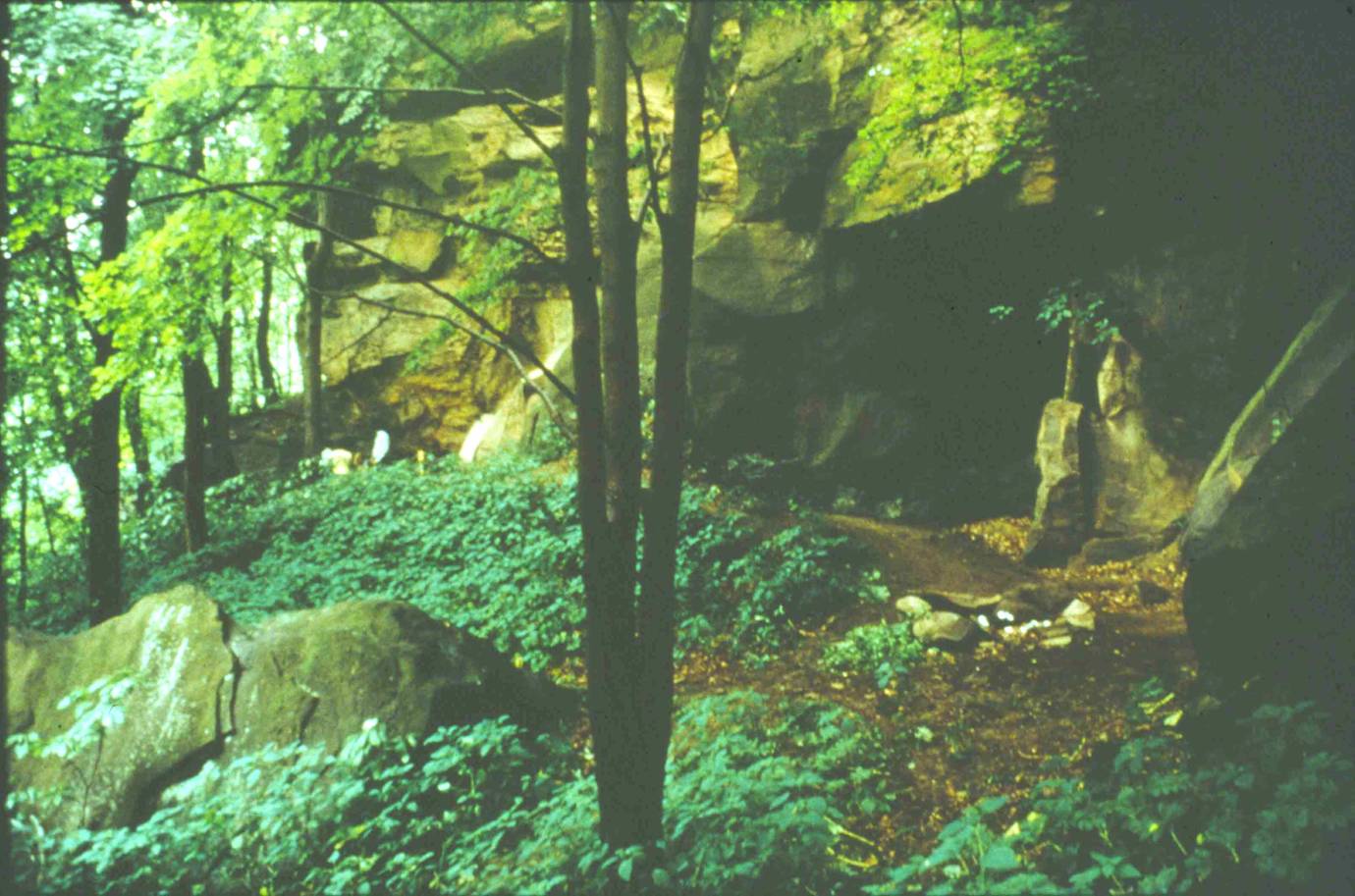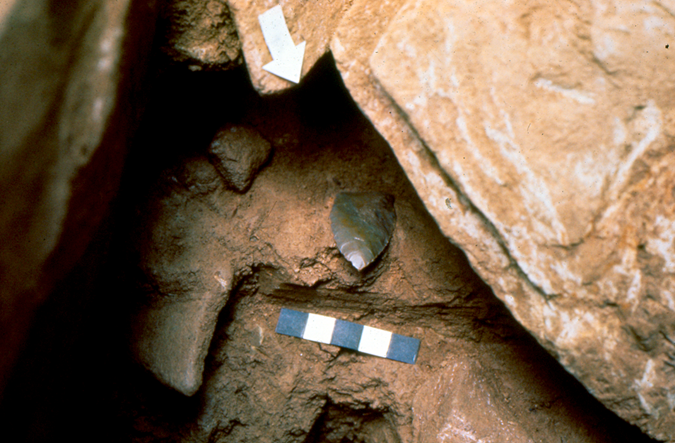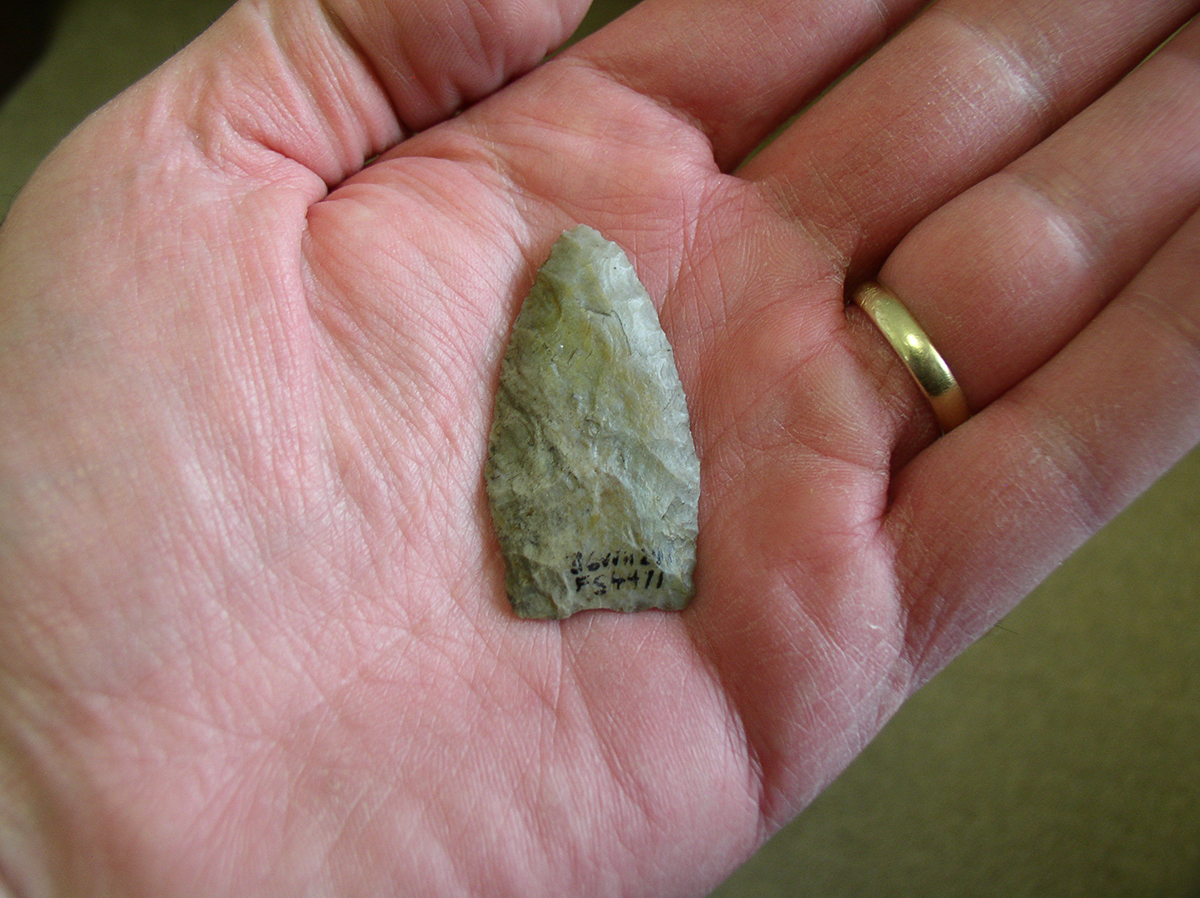
In June 1973, a multidisciplinary team of University of Pittsburgh students and faculty led by Dr. James Adovasio first arrived at the Meadowcroft Rockshelter. The team’s intent was to set up an archaeological “field school” to train students in utilizing modern, rigorous investigative techniques across a broad spectrum of sciences to fully “flesh-out” or “set the stage” of the Rockshelter’s prehistoric past.
Their initial expectations were not high, since it was well known that other Rockshelter excavations in the region were seldom very deep physically and did not span large swaths of human pre-history. As they viewed the large area under the massive sandstone overhang, its great height, and the twinkle of joy and expectation in the eyes of Albert Miller as his 18-year quest to have the shelter excavated had finally come to fruition, the team was imbued with a palpable sense of heightened expectations.
By 1976, they had excavated through 11 distinct layers of sediment while meticulously uncovering and cataloguing artifacts and plant and animal remains. They had uncovered manmade features like fire pits and occupational floors where ancient visitors had burnt off accumulated debris before camping [3]. Now they had reached a layer that was more than 10,000 years old and were still finding evidence of human occupation. Initial expectations regarding the site’s depth, age, and complexity had been shattered, and their premonition that it would yield something extraordinary would soon be realized beyond anyone’s wildest dreams.
It was July 31, 1976 [3] when the Miller Point was discovered by Joe Yedlowski. Little did he know that it would contribute to one of the biggest controversies in North American archaeology – the idea that the continent was inhabited well before the 11,500 years previously believed.

As he slowly uncovered the artifact, the field notes reflect a changing viewpoint of the discovery.
Field notes at 1 p.m. read: “Is it a flake”, “It’s a bifacial blade”, “No it’s a Lanceolate Point!” (2).
We can assume Dr. Adovasio had been contacted earlier in the day, for the field notes state: “1:05- James here to photo point.” (2)
The next entry reads, “3:00 Photo’s taken- approx 30 photos.” (2)
At some juncture, Albert Miller must have received word of the find. His journal notes that it was a humid and rainy Saturday and little work was going on at Meadowcroft Village. In his usual low-key fashion, Albert made the following brief entry into his journal: “went down to the dig to see early Lancelot [sic] point-F42.” [1]
At 3 p.m. that day, field notes state: “Clean up initiated…Heading to Lou’s [a local bar] apre cleanup.” (2)
At 5 p.m., the field notes state, “Site cleaned up….crew left for Lou’s…the above mentioned projectile point is labeled and locked in cabinet at Mine House” (2). By the time the raucous celebration at Lou’s ended, the crew was responsible for the Pleistocene-like extinction of 10 kegs of beer (3). Sometime in the midst of the revelry, it was agreed, by unanimous acclimation, to name the point the Miller Lanceolate to honor Albert, the man whose wisdom, patience, tenacity, and generosity had made it all happen.
Although Lou’s Bar no longer exists, the celebration that night remains legendary, at least in the minds of the sleepy hamlet’s older residents, as do many other credible and incredible tales of those halcyon days of the Meadowcroft Dig.

References
- Albert Miller Journal entries 7/21/76 – 8/10/76.
- Meadowcroft Rockshelter field notes 7/31/76.
- Adovasio, J.M. and Page, Jake. The First Americans, 2002, Random House
Jim Ulery is an Interpreter/Tour Guide at Meadowcroft Rockshelter and Historic Village.